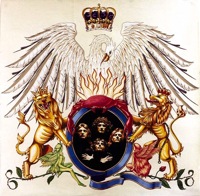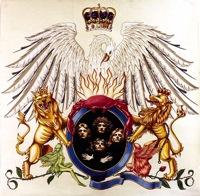Decades after its ascension to the glittery throne of Glam Rock, the band Queen continues to resonate loudly in pop culture. You could hear Queen’s imperative Don’t Stop Me Now resonating from the loudspeakers at AT&T Park last week as hoi polloi sought their seats for a preseason skirmish between the San Francisco Giants and the visiting Oakland A’s.
The anthemic We Are the Champions and We Will Rock You regale sports events, video games, and movie soundtracks all over the world.

But Duane Carroll, who during Queen’s reign in the 1970s was working on Brahms’ clarinet repertoire along with a doctorate in classical music performance, has felt a bit funny roaming the roadways of the East Bay with the legendary group’s greatest hits blasting from his CD player. “I wonder if anyone will see me doing this,” he found himself musing. “What would they think? ‘Here’s the conductor of the Contra Costa Wind Symphony, he’s going down the freeway on Queen!’”
If Carroll needs an excuse for genre-shifting, he’s got a good one. The CCWS, which he’s been leading since 1981, will present the U.S. premiere of Tolga Kashif’s Queen Symphony at the Walnut Creek Presbyterian Church on April 17. The conductor describes the piece as “a stunningly beautiful work, just gorgeous” and “not a mere medley of Queen tunes. Their melodies are there, but they’ve been explored and developed beyond.”
Brian May, Queen’s former lead guitarist, backup vocalist, and sometime songwriter, had been present for the world premiere of Kashif’s symphony by the Royal Philharmonic Orchestra in 2002, with the composer himself conducting. May commented, “Imagine a composer of the imagination and daring of a Tchaikovsky, a Holst, or a Mussorgsky. Imagine him let loose with the entire Queen catalogue of melodies, atmospheres and textures. ... Then you’ll be close to imagining where this work begins. This is something monumental and quite outrageous.”
Listen to the Music
Part of what impressed May was the manner in which Kashif had transposed the guitarist’s highly dramatic solos and his four-man group’s luscious multitracked vocals to a full orchestra and chorus. Carroll notes that the CCWS will make use of Erik Somers’ transcription of Kashif’s score for symphonic band, with additional, impressive elements. “There are six movements to the Symphony,” Carroll relates, “and three use a chorus,” in this case combining the choirs of Monte Vista and San Ramon Valley high schools. “These kids are magnificent singers,” testifies Carroll, and the choral directors — Bruce Koliha and Ken Abrams — have done a phenomenal job.
“Then there’s one movement which is piano concerto–like, for which we’re bringing in a real fine pianist named Nathan Cheung, who’s a senior at Foothill High School in Pleasanton. It’s rhythmically complex, and he’s doing a great job. There’s another movement that employs cello and violin as soloists,” Gregory Colburn and Tyler Lewis, respectively. “And the harpist, Shannon Polley, is a sophomore at Monte Vista High School. This is her third year playing with our group.” Carroll found that recruiting younger performers “brings a youthful enthusiasm,” along with the revelation that “these kids are familiar with Queen, so they’re excited, and we’re excited to have them joining us. It’s a brand-new adventure for all of us.”
Yet not entirely new. “Some of the people in the CCWS, when I mentioned Queen, said, ‘Oh, yeah, the Bohemian Rhapsody,’” referencing the long-form rock suite recorded by the band in 1975 and used to hilarious effect in a car karaoke scene in a 1992 film, Wayne’s World. “I just kind of responded with a blank stare,” Carroll admits. But when he caught up with the original hit track inside his own car, the conductor realized that “it moves along, it evolves.” Digging deeper, Carroll learned that Queen’s oeuvre sometimes incorporated canonic and other classical forms, and that the group’s electrifying lead singer and keyboardist, the late Freddie Mercury, had been an opera lover with classical piano training who in 1988 collaborated on a recording with opera diva Montserrat Caballé.
Although this is the first rock in his repertoire, Carroll has followed a credo of keeping his players and audiences stimulated with new material, often expanding beyond standard symphonic band instrumentation “to get a more mellow sound.” The ensemble has performed contemporary music on themes evoking the Lord of the Rings trilogy, the San Francisco earthquake of 1906, and Hungarian folksongs, the latter a commission composed by Frigyes Hidas, whose Fantasy for Cello will share the first part of the April 17 program with Peter Graham’s Gaelforce, based on Celtic material. “You have to trust that I’m gonna find music that I think is gonna be interesting,” Carroll declares, “and if I can get you there, I’m sure you’ll enjoy it. I believe that in my heart.”

